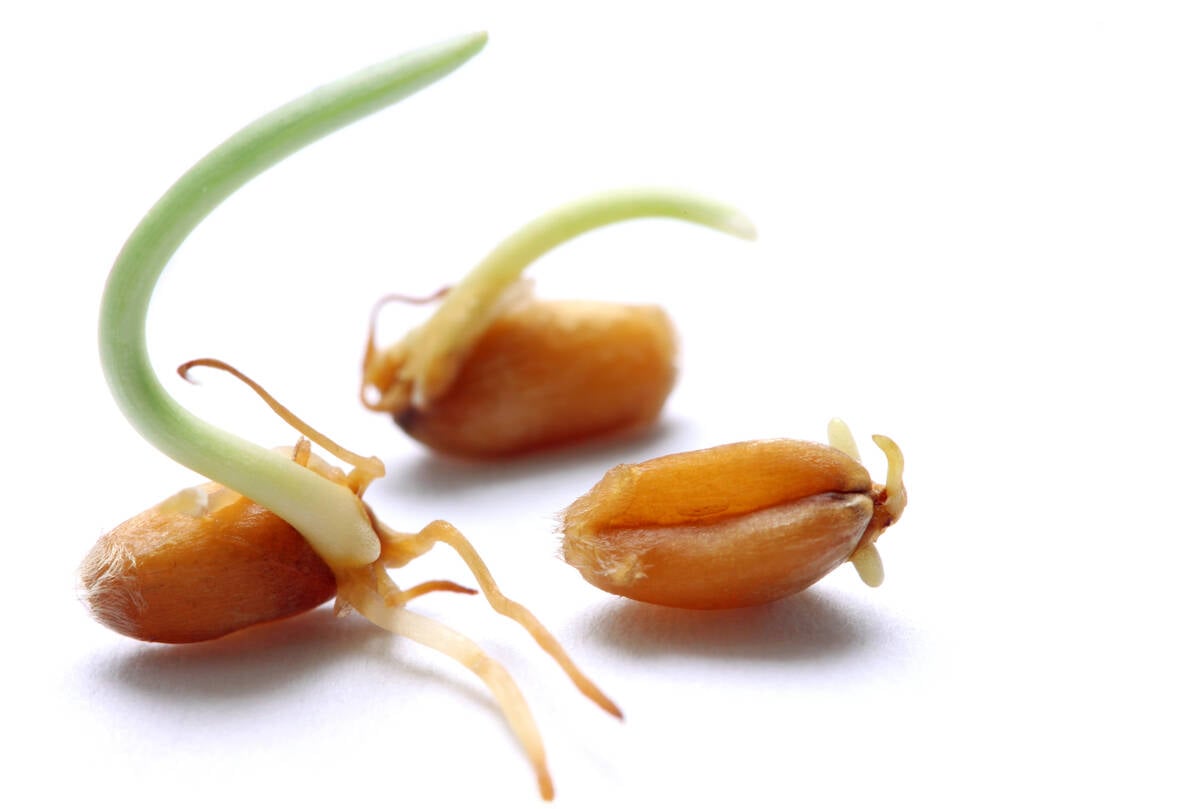CANORA, Sask. – Winter wheat growers face a conundrum this year.
While much of the unseeded acreage in Saskatchewan could potentially be seeded later this season to winter wheat, those fields lack adequate stubble to protect young seedlings.
Ducks Unlimited Canada, which offers incentives to new and expanding growers with Bayer CropScience, recommends the crop be planted into stubble.
“It’s still the recommended practice,” said Kevin Hardy, from the DUC Yorkton office. “This year, with the amount of fallow, we recognize that isn’t going to happen.”
Read Also

Manitoba farmers fight sprouted wheat after rain
Rain in mid-September has led to wheat sprouting problems in some Manitoba farm fields.
Mark Akins, a DUC winter wheat specialist in Regina, said DUC will pay incentives on about 100,000 acres on the Prairies. About 60,000 of those acres are in Saskatchewan.
“In Saskatchewan, we’ve basically filled up all the acres,” he said. “We’re assuming we’ll have a few guys drop off so we’ve started a waiting list.”
Sign-up in Alberta and Manitoba is starting to pick up, he said. A lot of growers have figured out that this fall is likely the driest their fields will get.
Both Akins and Hardy are resigned to the fact that good stubble will be hard to find.
Fields that are chem fallowed may have some stubble or even weed growth that can help.
Winterkill is a huge risk without enough stubble and new growers who take advantage of the incentive may find that to be a problem, Hardy said.
“You want to make sure they have the best chance of success possible,” Akins said. “When something doesn’t work out, there’s a tendency to blame the crop.”
Saskatchewan Crop Insurance addresses the issue of stubble through its low and high risk premium rates.
Producers who seed into poorer stubble face higher winterkill risk and will pay higher premiums than those who seed into better stubble. Producers have until Aug. 25 to select winterkill insurance.
Hardy said winter wheat is not as hardy as fall rye or winter triticale, so it needs protection. At least six inches of snow cover will help.
That usually isn’t a problem in the Canora area where he spoke to growers at the East Central Research Foundation field day.
The crop should be seeded no later than Sept. 15 and have at least three or four leaves going into the winter.
Hardy said there is a chance the crop could be seeded too early this year because it’s going on to chem fallow. That increases the risk of wheat streak mosaic virus and those effects won’t be seen until spring.
All phosphate should be placed with the seed but there are options for nitrogen application, he added.
Hardy said some will begin seeding by the third week in August. He cautioned against seeding after Sept. 15.
“If you’re not going to seed it on time, don’t bother,” he said. “You’re not going to be happy with it.”
Akins added that some growers will have to temper their expectations this year. Instead of the 90 bushel yield, they may have to be satisfied with 50 or 60 bu. per acre and having the crop use some of a moisture and keep the soil in place.
Continuous chemical applications are not going to help dry up wet ground, he said.















